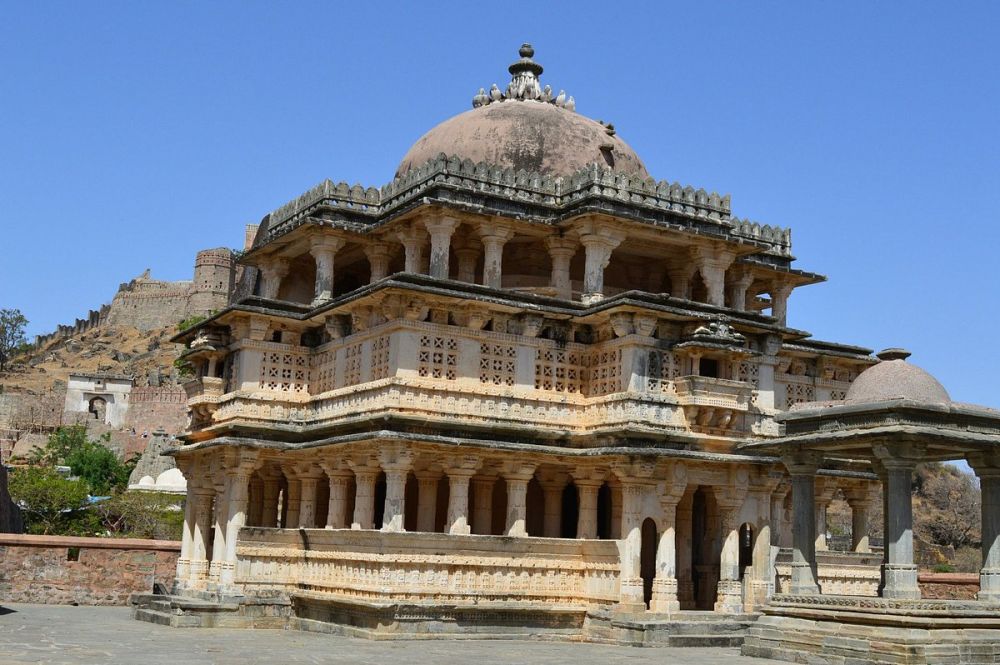

The Vedi Temple is one of the lesser-known yet significant historical sites located within the vicinity of the majestic Kumbhalgarh Fort in Rajasthan, India. It stands as a testimony to the architectural genius of the Rajput era and encapsulates rich cultural heritage that attracts history enthusiasts and pilgrims alike.
The Vedi Temple was commissioned by Rana Kumbha who was the ruler of Mewar in the 15th century. This temple was constructed to honor the sacrifice of the pilgrims who embarked on a religious journey to this region. As its history goes, the temple was initially built outside the fort but was later included within the fort's premises for safety and conservation.
The temple is renowned for its remarkable Rajput architecture. Built in a circular fashion, it exhibits the use of intricately carved stone. The temple, although relatively small, showcases exquisite craftsmanship and attention to detail typical of the era's temple architecture. It's an excellent example of the blend of both Jain and Hindu architectural influences that were prevalent during the reign of Rana Kumbha.
While Kumbhalgarh Fort has been a significant tourist draw for decades, ancillary structures like the Vedi Temple have only recently started gaining attention. This can largely be attributed to emerging trends in tourism that seek to uncover hidden gems and explore off-beat paths beyond the conventional tourist sites.
In the past, tourism in this region focused primarily on the indomitable Kumbhalgarh Fort which is famed for having the second-longest continuous wall after the Great Wall of China. However, the temple has seen an increase in tourist visitation due to the promotion by local tourism bodies emphasizing the importance of conserving and showcasing all facets of regional history and culture.
The current trend in the tourism industry of Rajasthan is moving towards experiential and immersive travel experiences, which encourages tourists to not just see, but engage with the locale's history and culture. Cultural events, sound and light shows, and guided heritage walks are increasingly becoming part of the tourist offerings in Kumbhalgarh. These initiatives have gradually cast light on the Vedi Temple, including it as an essential part of the storytelling around Kumbhalgarh’s grand history.
Sustainable and responsible tourism is also a growing trend. Efforts are being made to preserve the delicate historical sites like Vedi Temple while accommodating tourists. This approach helps in retaining the temple's original charm and integrity, providing visitors a genuine feel of Rajasthan's past.
Visitors to Vedi Temple can combine their visit with a tour of the Kumbhalgarh Fort and other nearby attractions such as the wildlife sanctuary, Neelkanth Mahadeo Temple, and the Badal Mahal. The temple is open throughout the year and is easily accessible via road from Udaipur and other major cities in Rajasthan.
Overall, the Vedi Temple stands as an integral aspect of Kumbhalgarh's tourist appeal, offering insight into the rich tapestry of Indian history and the enduring legacy of Rajput rulers. Its rising popularity marks a new chapter in the history of tourism at this historical site.